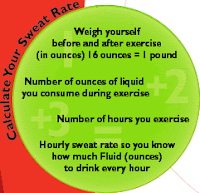Analyst Insight by Ewa Hudson, Head of Health and Wellness Research
Like a number of “superfruits”, cherries boast a formidable antioxidant content. However, it appears that they may have more specific health benefits to offer in a number of very promising growth areas, such as sports nutrition, pain management and combating sleeplessness.
Cherries are enjoying a surge in popularity. Euromonitor International's fresh food statistics show that global volume sales of fresh cherries rose by 17% over the 2006-2011 review period, outperforming other high-end fresh fruit “treats” like strawberries and grapes. In 2011, cherries emerged as the second most dynamic fresh fruit category, achieving a 4% volume gain, ahead of cranberries/blueberries.
Cherries are enjoying a surge in popularity. Euromonitor International's fresh food statistics show that global volume sales of fresh cherries rose by 17% over the 2006-2011 review period, outperforming other high-end fresh fruit “treats” like strawberries and grapes. In 2011, cherries emerged as the second most dynamic fresh fruit category, achieving a 4% volume gain, ahead of cranberries/blueberries.
Global volume sales of cherries amounted to 1.3 million tonnes in 2011, which was only marginally below that of cranberries/blueberries and less than half of the volumes achieved by strawberries. Although an ongoing hit with consumers, the market for fresh cherries remains constrained by both seasonality and a short shelf life. Unlike some types of berries, such as strawberries, blueberries and raspberries, which are also highly perishable but whose seasonality can be artificially prolonged, for example through the use of polytunnels, cherries only manage to make a comparatively short-lived annual appearance.
Luckily, in order to enjoy the taste and health benefits of cherries, consumers are not limited to eating them in their fresh state, but can resort to frozen, dried and powdered formats as well as drinking cherry juice. Needless to say, this inherent versatility is good news for a range of players engaged in the health and wellness industry.






